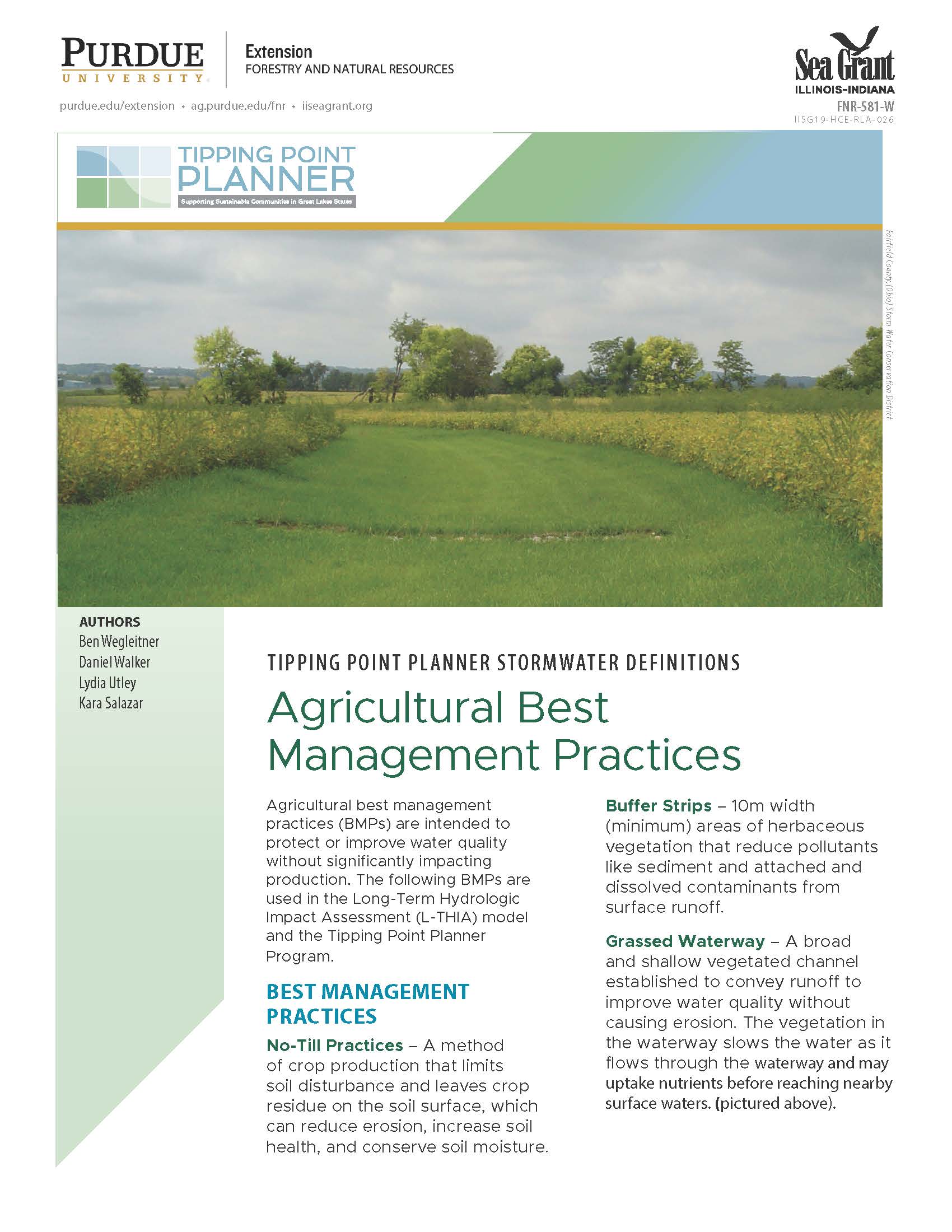Results
Year: 2020
This publication provides an overview of how changing climate conditions will affect the Midwestern United States, with a specific focus on Indiana, along with sensible strategies for coping with these changes. It is intended to help regional policymakers understand past and future environmental changes to support local and regional planning efforts.
This document is available through the Purdue University Extension Education Store at https://edustore.purdue.edu/id-520-w.html.
Year: 2020
Despite strong evidence that climate change is happening, many people do not realize the urgency with which we need to act, nor do they fully understand the types of impacts facing their communities. This publication provides some basic, but proven, strategies to help local officials more effectively communicate with the public about climate change.
This file is available from the Purdue Extension EdStore at, https://edustore.purdue.edu/ID-519-W.html.

Year: 2020
The Conservation through Community Leadership(CCL) program serves as a roadmap for communities tackling complex land use and natural resource management challenges. The program provides information, tools, and resources to help communities work with diverse stakeholders to:
- Identify issues of concern
- Assess current community conditions and resources
- Create a shared vision
- Develop an action plan and implementation strategies
The curriculum contains education materials and resources to support community planning for land use and invasive species management. The following curriculum chapters are available for download:
- Conservation through Community Leadership Introduction
- Planning Tools for Land Use and Natural Resource Management
- Natural Resource Management: Invasive Species Education and Management
- Developing an Effective Community Organization
- Implementing Best Practices for Meetings
To learn more about facilitated community action planning program offerings, please visit purdue.edu/fnr/extension/scep/ccl
To access this resource, visit Purdue University Extension’s Ed Store at https://edustore.purdue.edu/id-514.html.

Year: 2020
Through the decision support system, Tipping Point Planner (tippingpointplanner.org), communities in Great Lakes states can plan for a sustainable future by directly linking data to the local decision-making process. With help from trained facilitators, Tipping Point Planner enables professional as well as citizen participation in the land use planning and management process, including maintaining projects using a HUC 12 watershed scale. The program provides information, tools, and resources to help communities work with diverse stakeholders to:
- Examine past and predicted land-use changes
- Identify environmental threats
- Define natural resource assets in need of protection or restoration
- Explore land-use strategies and policies that enhance local values
- Gain the framework to define a community’s priorities through interactive community visioning exercises
The curriculum contains education materials and resources to support community planning for land use and natural resource management. The following curriculum chapters are available for download:
- Tipping Point Planner Introduction
- Planning Tools for Land Use and Natural Resource Management
- Tipping Point Planner Modules
To learn more about facilitated community action planning program offerings, please visit www.purdue.edu/fnr/extension/scep/programs/tipping-point-planner
To download this resource visit the Purdue Extension EdStore at https://edustore.purdue.edu/ID-514-TPP.html.
Year: 2019
This publication discusses the benefits of several urban best management practices for protecting or improving water quality. These BMPs are used in the Long-Term Hydrologic Impact Assessment model in the Tipping Point Planner decision support system.
This document is available through the Purdue Extension Education Store at https://edustore.purdue.edu/FNR-580-W.html.
Year: 2019
This publication discusses the benefits of several agricultural best management practices for protecting or improving water quality. These BMPs are used in the Long-Term Hydrologic Impact Assessment model in the Tipping Point Planner decision support system.
It is available through the Purdue Extension Education Store at https://edustore.purdue.edu/FNR-581-W.html.
Page 2 of 3
Note: Some older Illinois-Indiana Sea Grant publications have not yet been restructured into ADA compliant formats. We are actively working on this. If you are having difficulty accessing a particular item in one of our databases, please contact iisg@purdue.edu with the name of the item and its URL for further assistance.






